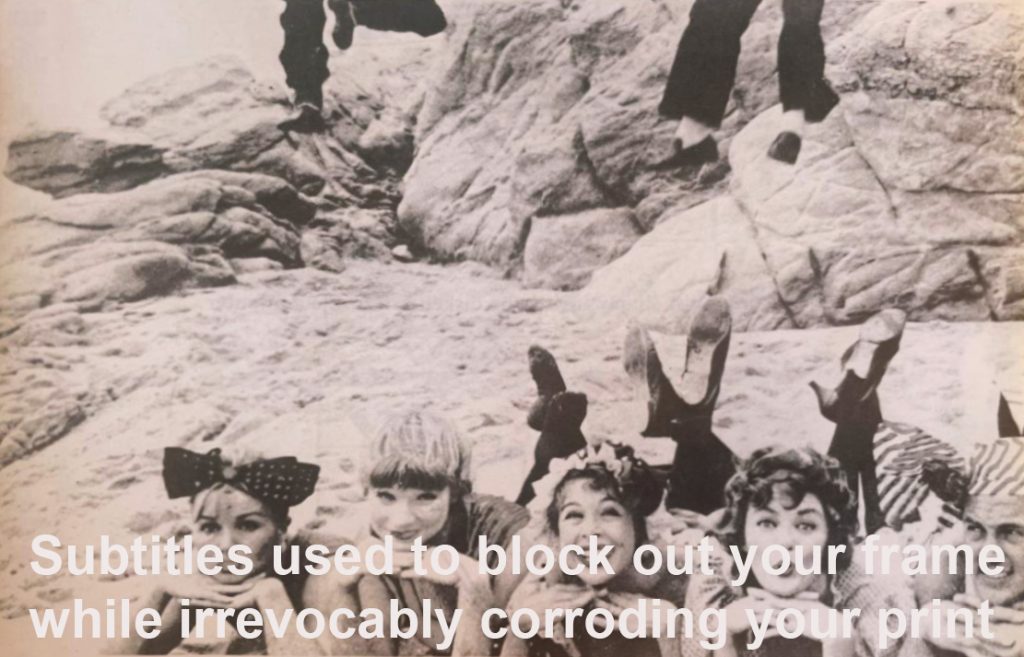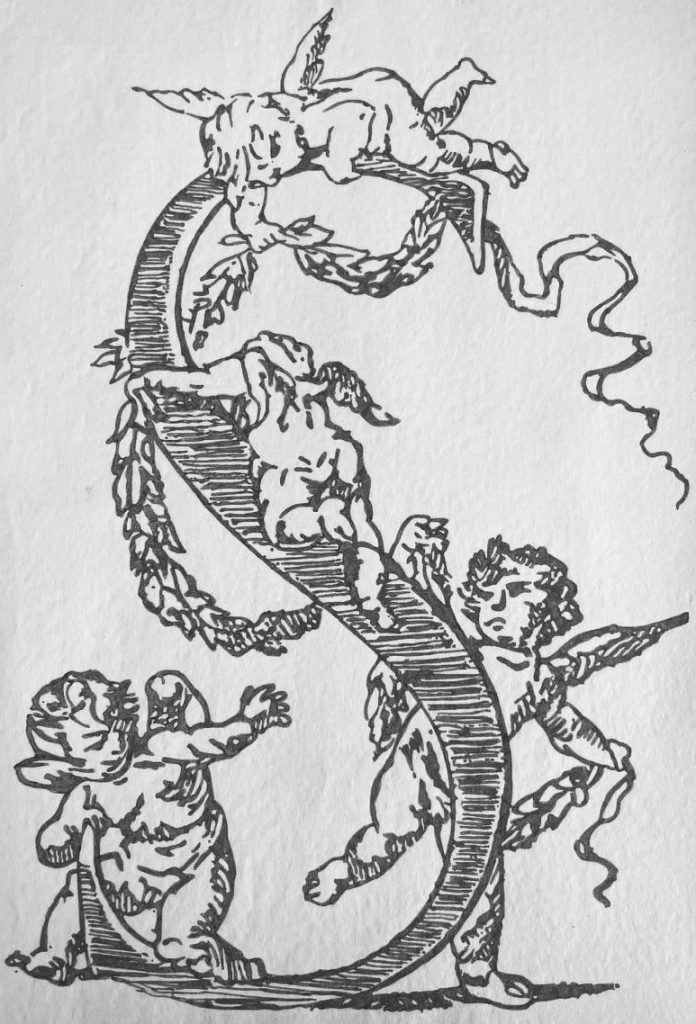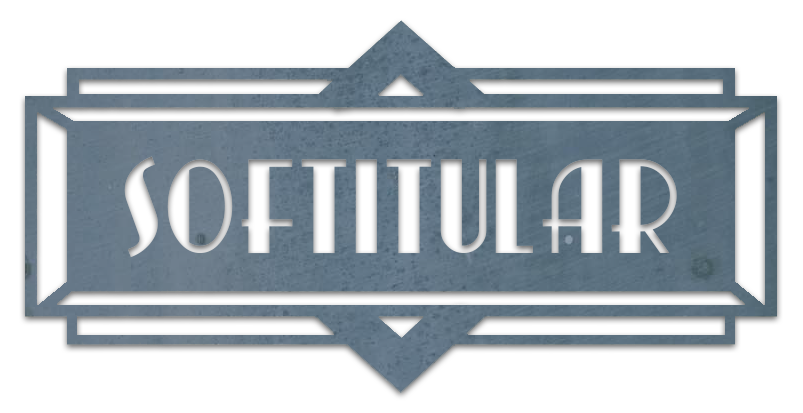A quick look at the history of electronic subtitles
Subtitling underwent a remarkable transformation with Fabrizio Fiumi’s revolutionary invention in 1984. Traditionally, subtitles were burnt onto each copy of the film, which limited flexibility in multilingual distribution and obstructed key parts of the image, affecting the original cinematic experience intended by the directors (Carroll, 1995; Parks, 1996). This method also posed a major economic problem, as it was necessary to create a different physical copy of the film for each language, which considerably increased costs.
Fabrizio Fiumi, an Italian architect and filmmaker, director of the Florence Film Festival and a member of the innovative architectural group “Gruppo 9999” (Wikipedia, n.d.), designed and introduced a paradigm shift with the invention of the Softitler system. This subtitling method preserved the purity of the cinematic image and allowed subtitles to be displayed on separate screens located below or above the main screen, eliminating the need to physically alter the original film (Jenkins, 1995). This innovation significantly improved the aesthetics and accessibility of films in festivals and cinemas, and reduced costs and the time needed to produce multilingual subtitles. Thanks to the Softitler system, the same copy of a film could be used to screen different languages just by exchanging subtitle disks, which represented considerable savings compared to traditional methods (Carroll, 1995).
Fellini and the Softitler system
The quality and efficiency of the Softitler system quickly caught the eye of important personalities in the film industry, including the renowned Italian filmmaker Federico Fellini. Fellini, known for his meticulous care in visual composition, adopted Fiumi’s system for the international exhibition of his “Tutto Fellini” retrospective. Impressed by Softitler’s ability to keep the original film intact, Fellini personally chose Fiumi to ensure his cinematic vision would reach global audiences intact (Addiego, 1995; Fine, 1995).


Validation by festivals and institutions
Prestigious institutions like New York’s Museum of Modern Art (MoMA) and renowned international festivals like the Bombay Film Festival and the International Film Festival of Montréal validated and praised the use of Softitler for its clarity and respect for the integrity of the cinematic image (Mancia, 1987; Baleio, 1994; Reed, 1990). The adoption of Softitler by these institutions and its presence in international festivals reaffirmed its position as a respectful solution for both filmmakers and audiences.
The establishment of Softitular
In 1991, Fiumi created Softitler’s Spanish headquarters, which he named “Softitular”. From Softitular, we have wanted to continue with the mission of innovating in the field of subtitling while making sure language barriers are never an obstacle to the cultural experience cinema offers.
Today, this system not only continues to enable the projection of films in multiple languages, but it has also become a standard in the preservation of cinematic authenticity. Softitular’s history in the field of translation and electronic subtitling is a testimony to our commitment to innovation and has positioned us in the market as a quality standard.
References
- Jenkins, M. (1995, October 20). The soft machine. Washington City Paper. Retrieved from https://washingtoncitypaper.com/article/297555/the-soft-machine/
- Addiego, W. V. (1995, August 25). A fresh look at Fellini’s films. SFChronicle. Retrieved from https://www.sfchronicle.com/news/article/a-fresh-look-at-fellini-s-films-3134793.php
- Carroll, J. (1995, August 28). New subtitle format keeps the words to themselves. SFGate. Retrieved from https://www.sfgate.com/entertainment/article/new-subtitle-format-keeps-the-words-to-themselves-3025354.php
- Parks, B. (1996, January 1). Subtitles at warp speed. Wired. Retrieved from https://www.wired.com/1996/01/subtitles-at-warp-speed/
- Contributed Content. (1986, April 4). New subtitle system may translate into cinema success. Chicago Tribune. Retrieved from https://www.chicagotribune.com/1986/04/04/new-subtitle-system-may-translate-into-cinema-success/
- Chaume, F. (2013, July). Desarrollo histórico de la subtitulación. Portal digital de Historia de la traducción en España. Retrieved from https://phte.upf.edu/hte/siglo-xx-xxi/chaume/
- Oncins, E. (2013, July). The process of subtitling at film festivals: Death in Venice? International Journal of Humanities and Social Science, 3(14), 1-14. Retrieved from http://www.ijhssnet.com/journals/Vol_3_No_14_Special_Issue_July_2013/9.pdf
- Pariser, M., & Lidell, W. (1984, March). Festivals: In Brief: Foreign. The Independent (Film & Video Monthly), 23. Retrieved from https://independent-magazine.org/wp-content/uploads/sites/41/2014/09/independent07foun.pdf
- Bartoll, E. (2008). Introducción a la traducción audiovisual. En VIII. Historia de la traducción audiovisual (Apartado 2.1.4. Los subtítulos electrónicos, p. 168). Editorial UOC.
- Raynor, W. (1986, March 30). Facelift for foreign films. The Observer. Retrieved from https://www.newspapers.com/article/the-observer/133310378/
- Goldstein, B. (1993, November 17). Film Forum 2 [Fax]. Sent to F. Lucchesi and C. Cormanni, Cinecittà International. [Scanned version]. Retrieved from https://softitular.com/wp-content/uploads/2024/06/Tutto-Fellini-Fax-1.jpg
- Fine, J. (1995, February 1). Maestro magic. Mid-Day, VOL XVI – NO 185, Bombay. [Scanned version]. Retrieved from https://softitular.com/wp-content/uploads/2024/06/Mid-Day-1.jpg
- Variety Staff. (1985, December 25). Electronic subtitles invented by prez of Florence Fest. Variety, Vol. 321, No. 9. [Scanned version]. Retrieved from https://softitular.com/wp-content/uploads/2024/06/Variety1-1.jpg, https://softitular.com/wp-content/uploads/2024/06/Variety2-1.jpg and https://softitular.com/wp-content/uploads/2024/06/Variety3-1.jpg
- Playback Staff. (1990, August 20). Working miracles. Playback – Canada’s broadcast and production journal. [Scanned version]. Retrieved from https://softitular.com/wp-content/uploads/2024/06/Playback-1.jpg
- Mancia, A. (1987, April 21). [Thank you letter to Fabrizio Fiumi]. The Museum of Modern Art. [Scanned version]. Retrieved from https://softitular.com/wp-content/uploads/2024/06/MoMA2-1.jpg
- Balbio, M. (1994, August 29). O jeitinho italiano no festival de cinema. O Globo. [Scanned version]. Retrieved from https://softitular.com/wp-content/uploads/2024/06/O-Globo-1.jpg
- Labouret, M. (1994, January-February). Bientôt sous vos écrans. Vidéothèque de Paris, 6, 1-2. [Scanned version]. Retrieved from https://softitular.com/wp-content/uploads/2024/06/Videotheque-de-Paris-1.jpg
- Reed, F. A. (1990, August 18). Le FFM innove avec une méthode révolutionnaire de sous-titrage. Le Devoir. [Scanned version]. Retrieved from https://softitular.com/wp-content/uploads/2024/06/Le-Devoir-1.jpg

